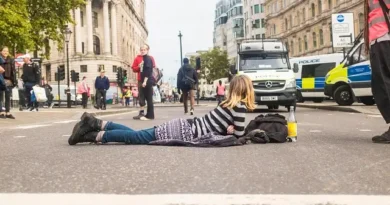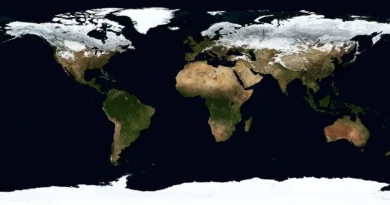The Roman Expulsion Of The Jewish People From Judea
The Roman Expulsion Of The Jewish People From Judea
Table of Contents
1. Introduction
The expulsion of the Jewish people from Judea by the Romans was a pivotal event in Jewish history, with profound and lasting impacts on the region’s demographic and cultural landscape. This expulsion was not a single event but rather the culmination of a series of conflicts, policies, and revolts that spanned several decades. This detailed examination will explore the key events leading to the Jewish expulsion, the aftermath, and the groups that settled in Judea afterward.
2. Historical Background
Judea, a region with deep historical and religious significance for the Jewish people, came under Roman control in the first century BCE. The Romans, initially under Pompey, annexed Judea in 63 BCE, and it later became a client kingdom and then a province of the Roman Empire. The relationship between the Jewish populace and their Roman rulers was fraught with tension, primarily due to religious and cultural differences.
3. The First Jewish-Roman War (66-73 CE)
3.1 Causes of the War
The First Jewish-Roman War, also known as the Great Revolt, was precipitated by a combination of political, economic, and religious factors. Heavy taxation, religious disrespect, and Roman political instability all contributed to growing Jewish discontent. The spark for the revolt came when Roman authorities confiscated large sums of money from the Temple treasury, leading to widespread outrage and rebellion.
3.2 Key Events and Battles
The revolt began in 66 CE in the city of Caesarea and quickly spread throughout Judea. Key battles included the siege of Jotapata, where Jewish forces led by Josephus fought valiantly but were ultimately defeated. The Romans, under General Vespasian and his son Titus, systematically captured key Jewish strongholds.
3.3 The Destruction of the Second Temple
The climax of the First Jewish-Roman War was the siege of Jerusalem in 70 CE. Roman forces breached the city walls and, after intense fighting, set fire to the Second Temple, a devastating blow to Jewish cultural and religious identity. The Temple’s destruction marked the end of the Jewish revolt and led to significant loss of life and property.
4. The Aftermath of the First War
4.1 Impact on the Jewish Population
The aftermath of the war saw a significant reduction in the Jewish population in Judea. Many Jews were killed, while others were taken as slaves or fled to other parts of the Roman Empire. The war’s devastation disrupted the socio-economic structure of Judean society.
4.2 Roman Policies and Repression
In the wake of the revolt, the Romans implemented harsh measures to prevent further uprisings. Heavy taxes were imposed, and Roman garrisons were established to maintain order. The surviving Jewish population faced severe restrictions on religious and cultural practices.
5. The Bar Kokhba Revolt (132-135 CE)
5.1 Background and Causes
The Bar Kokhba Revolt was another major Jewish uprising against Roman rule, fueled by religious and nationalistic fervor. The immediate cause was Emperor Hadrian’s decision to build a Roman city, Aelia Capitolina, on the ruins of Jerusalem and erect a temple to Jupiter on the Temple Mount.
5.2 The Course of the Revolt
Led by Simon Bar Kokhba, the revolt initially succeeded in reclaiming Jerusalem and establishing an independent Jewish state. However, the Romans, under the command of General Julius Severus, launched a brutal counteroffensive. The revolt was crushed after three years of intense fighting, resulting in massive casualties.
5.3 Roman Suppression and Consequences
The aftermath of the Bar Kokhba Revolt was catastrophic for the Jewish people. Roman reprisals were severe: many Jews were killed, and survivors were sold into slavery. Hadrian issued edicts banning Jewish religious practices and barred Jews from entering Jerusalem, except on the anniversary of the Temple’s destruction.
6. The Diaspora: Jewish Dispersion
6.1 Exile and Migration Patterns
Following these revolts, the Jewish population was dispersed across the Roman Empire and beyond. Large Jewish communities were established in Babylon (modern-day Iraq), Egypt, North Africa, and various parts of Europe.
6.2 Establishment of Jewish Communities
In these new locales, Jews maintained their religious and cultural identity, establishing synagogues and schools. The diaspora communities played a crucial role in preserving Jewish traditions and scholarship.
7. Settlement by Other Groups
7.1 Roman and Greco-Roman Settlers
To consolidate control over Judea, the Romans settled veterans and other Roman citizens in the region. These settlers contributed to the Romanization and Hellenization of Judea, bringing with them Roman customs, language, and governance.
7.2 Samaritans and Other Indigenous Peoples
The Samaritans, who inhabited the neighboring region of Samaria, continued to live in Judea. Other local groups, including Arabs and various tribes from the surrounding areas, also settled in the depopulated lands.
7.3 Migration from Neighboring Regions
Over time, people from neighboring regions such as Syria, Phoenicia, and Nabatea moved into Judea. This migration added to the region’s ethnic and cultural diversity.
8. Long-Term Effects on Judea
8.1 Cultural and Demographic Changes
The Roman Expulsion Of The Jewish People From Judea. The expulsion and dispersion of the Jewish population led to significant cultural and demographic changes in Judea. The region became more cosmopolitan, with a mix of Roman, Hellenistic, and indigenous influences shaping its development.
8.2 Subsequent Rulers and Influences
Following the Roman period, Judea came under the control of various powers, including the Byzantines, Muslims, Crusaders, and Ottomans. Each of these rulers left their mark on the region, contributing to its rich and complex history.
The Roman Expulsion Of The Jewish People From Judea
9. Conclusion
The Roman expulsion of the Jewish people from Judea was a transformative event with lasting repercussions. The destruction of the Second Temple and the suppression of Jewish revolts led to a significant dispersion of the Jewish population and the settlement of other groups in Judea. These changes reshaped the region’s demographic and cultural landscape, creating a legacy that continues to influence the historical narrative of the Middle East.




